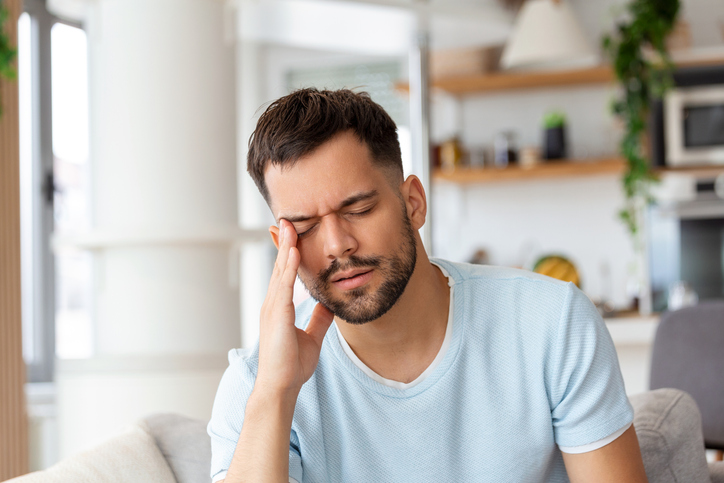By Sara O’Connor, SPT
Headache disorders are a common neurological impairment affecting the adult population with a few of the most common types of headaches being tension headaches, cluster headaches, and migraines. Headache disorders can be associated with decreased quality of life and decreased participation in social activities.
Tension-type headaches are the most common form of headaches often beginning in the teenage years and persisting to adulthood. Females are more likely to be affected than males. Tension-type headaches may be associated with stress or neck musculature tightness with symptoms most commonly being:
- On both sides of the head
- Non-throbbing
- Sensation of pressure or a band around the head into the neck region
- Pain located near the forehead or above the ears
- Tightness or tense feeling of the neck muscles
Migraines are another form of headache that affect females more than males and often begin around the age of puberty and can last into the middle of adulthood. Migraines are associated with attacks of head pain that can last between a few hours to a few days. Migraine symptoms are most commonly:
- On one side of the head
- Pulsating
- Moderate to severe intensity of pain
- Sensitivity to light or sounds that can increase the pain
- Nausea and vomiting can accompany migraines
Cluster headaches are not as common as tension-type headaches or migraines and affect more males than females. Cluster headaches are more common in adults over the age of 20 years old. Cluster headaches symptoms are most commonly:
- Severe intensity of pain
- Short duration
- Pain located near one eye with tearing or redness of the affected eye
- Stuffy or runny nose on the affected side
Physical therapy can be beneficial for patients with various forms of headaches
Physical therapists can provide education on the type of headache one might be experiencing and possible aggravating factors of the headaches. A physical therapist can also provide education on how to decrease headache symptoms at home. Manual therapy such as massage, mobilizations, trigger point release, and other forms are effective in treating some headache symptoms in relieving the frequency, and pain intensity and can help improve the quality of life. A balanced and individualized approach to the treatment of headaches provide the best outcome for symptom relief.
References
- Headache disorders. World Health Organization. April 8, 2016. Accessed December 2023. https://www.who.int/news-room/fact-sheets/detail/headache-disorders.
- Schneider D. Health tips: 3 ways a physical therapist can help manage headaches. Choose PT. December 5, 2018. Accessed December 2023. https://www.choosept.com/health-tips/3-ways-physical-therapist-help-manage-headaches.
- Cumplido-Trasmonte C, Fernández-González P, Alguacil-Diego IM, Molina-Rueda F. Manual therapy in adults with tension-type headache: A systematic review.Neurología (English Edition). 2021;36(7):537-547. doi:10.1016/j.nrleng.2017.12.005
If you are suffering with headaches, contact us today via our contact form, or call us directly at our physical therapy clinics in Malta, Saratoga, Delmar or Queensbury at 518-289-5242 for a personal evaluation, and find out how we can get you feeling better!

